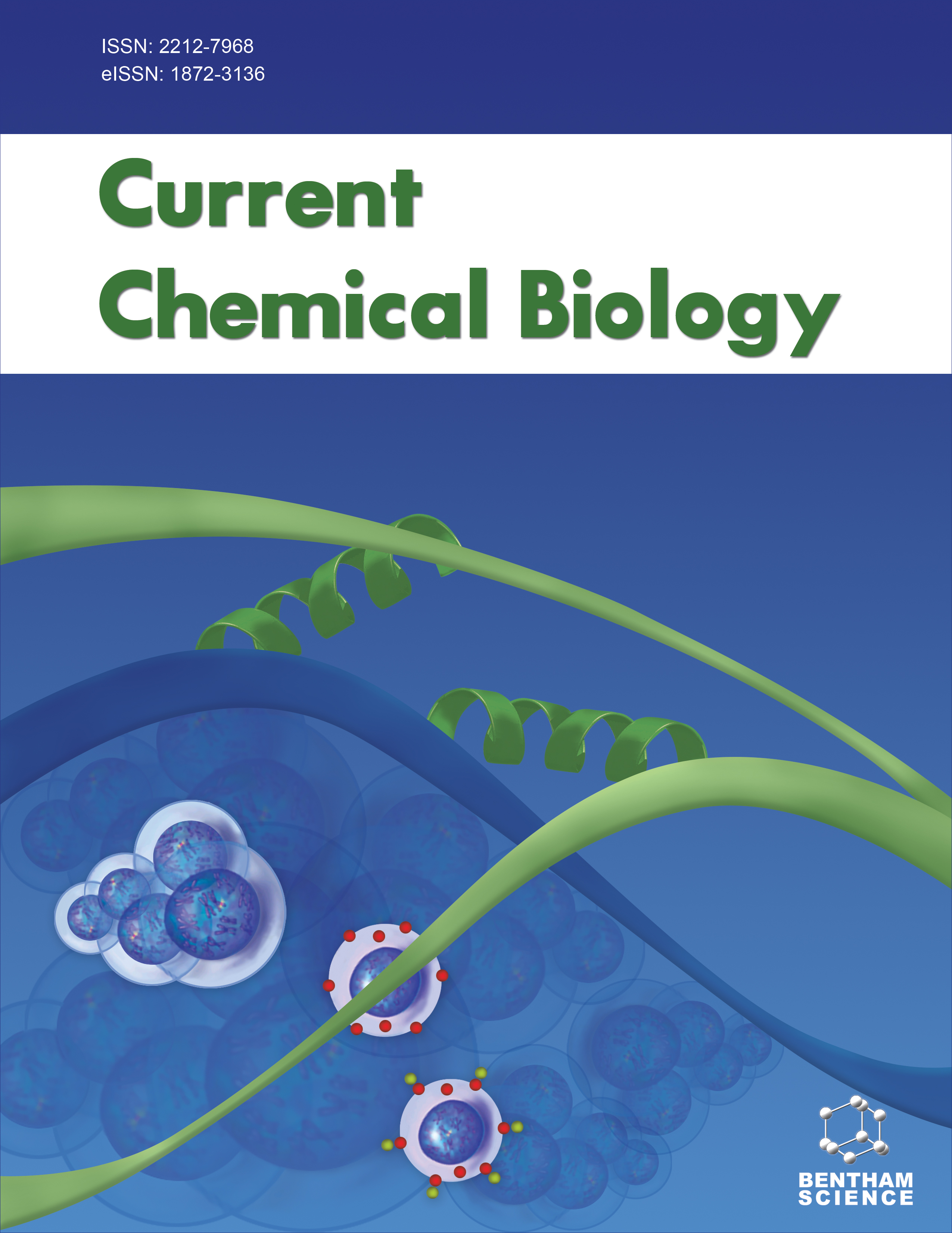- Home
- A-Z Publications
- Current Chemical Biology
- Previous Issues
- Volume 17, Issue 1, 2023
Current Chemical Biology - Volume 17, Issue 1, 2023
Volume 17, Issue 1, 2023
-
-
Modulation of Lignin and its Implications in Salt, Drought and Temperature Stress Tolerance
More LessAuthors: Kavi K. P.B., Srinivas B., Prashant Singam, Sahitya G., Tulya R. S. V., Rajasheker G. and Prashanth SuravajhalaBackground: Lignins are phenylpropanoid polymers with complex composition and structures and crucial components in plant cell walls. Lignins are biosynthesized from oxidative polymerization of 4-hydroxycinnamyl alcohols, but differ in the degree of methoxylation. Objective: This review makes an endeavour to identify the gaps in our understanding of lignin modulation and gain insights into their relevance to abiotic stress Read More
-
-
-
Tellurium-containing Thiol-peroxidase-like Antioxidants and their Catalytic Mechanism
More LessAuthors: Antonella Capperucci and Damiano TaniniThe development of novel small molecules with effective catalytic antioxidant properties is highly sought after. A wide array of structurally diverse selenium- and tellurium-containing glutathione peroxidase mimics have been studied over the past two decades. Within this arena, organotellurium compounds generally exhibit higher catalytic properties with respect to selenium-containing analogues. Different mechanisms accountin Read More
-
-
-
A Systematic Review Study on the Effectiveness of Medicinal Plants Against Acinetobacter baumannii
More LessIntroduction: Acinetobacter baumannii is an opportunistic bacterium capable of causing nosocomial infections resistant to a wide range of antibiotics. Herbal medicines could become the source of novel therapies for antibiotic-resistant bacteria. This review paper aimed to survey the effectiveness of medicinal plants in treating infections caused by A. baumannii. Methods: The relevant data was obtained by systematica Read More
-
-
-
Optimization of Carotenoid Production by Rhodosporidium babjevae and Evaluation of Antifungal and Dyeing Activity
More LessAuthors: Nastaran Salimi, Mahboobeh Madani and Pegah ShakibAims and Objective: The aim of this study was to evaluate the antifungal, dyeing activity and optimization of carotenoid production by Rhodosporidium babjevae. Background: Rhodosporidium red yeast is one of the natural alternative sources of carotenoids. Carotenoids are produced by a wide variety of bacteria, algae, fungi ,and plants. These pigments serve a vital function as antioxidant protectors and hav Read More
-
-
-
Adaptogenic Properties of 1-(Germatran-1-il)-Oxyethylamine
More LessAuthors: Irina V. Zhigacheva, Natalya I. Krikunova and Maksud M. RasulovBackground: Germanium is a biologically active trace element, and it is present in almost all organs and tissues. Its biological activity was revealed in the 20th century. However, the study on the possibility of using germanium for medical purposes was first undertaken by the Japanese scientist Dr. Kazuhiko Asai in 1940. In 1965, academician M.G.Voronkov and colleagues synthesized tricyclic esters of triethanolamine germanium Read More
-
-
-
Benzeneseleninic Acid Promoting the Selenofunctionalization of 2- Naphthol Derivatives: Synthesis and Antioxidant Activity of 1- Organoselanyl-naphthalen-2-ols
More LessBackground: We report the synthesis and antioxidant evaluation of 1-organoselanylnaphthalen- 2-ols. The title compounds were selectively prepared through the selenofunctionalization of 2-naphthol derivatives using benzeneseleninic acids as a selenium source. Objective: We aimed at synthesizing 1-organoselanyl-naphthalen-2-ol by functionalizing 2-naphthol with arylseleninic acids using glycerol as the solvent and furt Read More
-
-
-
Insights Into Resveratrol as an Inhibitor Against Aβ1-42 Peptide Aggregation: A Molecular Dynamics Simulation Study
More LessAuthors: Priyanka Borah and Venkata Satish K. MattaparthiBackground: Resveratrol (RSV), a polyphenolic compound, is reported to have antiaggregation properties against Amyloid-beta peptides. It is, therefore, significant to understand the mechanism of inhibition of Aβ1-42 peptide aggregation by the RSV at the molecular level. We have used Molecular docking along with Molecular dynamics (MD) simulation techniques to address the role of RSV in the inhibition of Aβ1-42 pepti Read More
-
Volumes & issues
Most Read This Month
Article
content/journals/ccb
Journal
10
5
false
en


